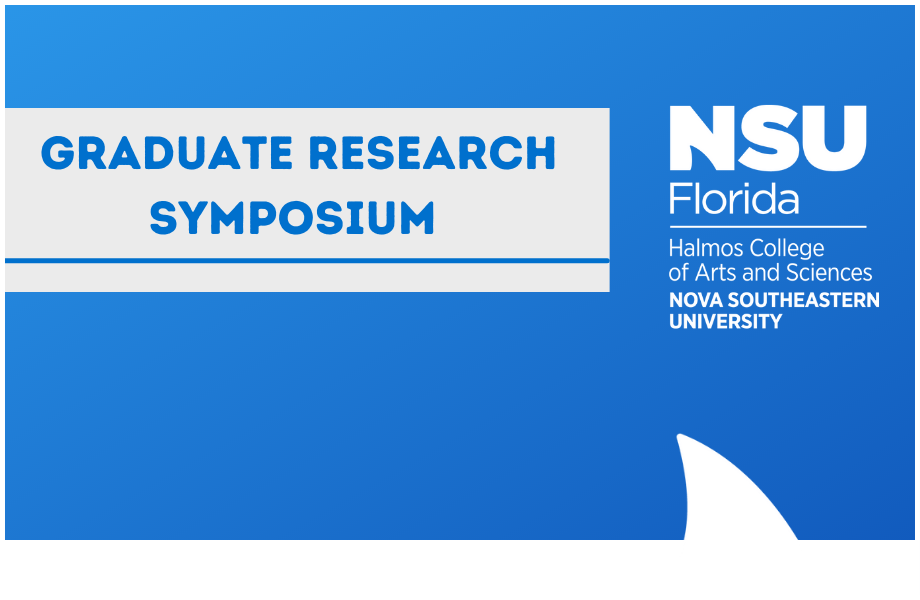Appraisal of Microplastic Ingestion in Deep-Pelagic Fishes and Crustaceans in the Northern Gulf of Mexico and Straits of Florida
Location
Guy Harvey Oceanographic Center Facility
Start
1-31-2018 10:15 AM
End
1-31-2018 10:30 AM
Type of Presentation
Oral Presentation
Abstract
Plastic litter infiltrates aquatic ecosystems globally, the majority of which are microplastics (millimeter). These microplastics have been detected in high concentrations on marine shorelines, surface water of the pelagic realm, deep-sea sediments, and food webs. Prior studies on plastic contamination have examined pelagic and benthic deep-sea ecosystems, yet only one previous study took place in the Gulf of Mexico, home to many commercially important fishery species. That study documented anthropogenic litter in the benthic realm of the Gulf of Mexico, and there remains a gap in knowledge on plastic ingestion by micronekton (water column dwellers) in spite of their importance as major prey items for commercially fished species. The digestive tract of a number of these fish and crustacean prey species, collected in the Gulf of Mexico and the Straits of Florida, were analyzed in the present study. Our results show that microplastics have entered deep-sea (meters) food webs in this ecosystem. Our data reveal that out of 591 individuals (287 fishes and 304 crustaceans) from the Straits of Florida and Gulf of Mexico, 27% (162/591 individuals) contained plastic in their digestive tracts. Out of 204 plastic particles found, crustaceans consumed 116 microplastics (78% fibers; 16% fragments; 6% films) while fishes consumed 88 (46% fibers; 41% fragments; 7% films; 6% microbeads). This study is the first one indicating that plastics have infiltrated the food webs of Gulf of Mexico ecosystems, suggesting that more scrutiny be given to deep-sea ecosystems globally.
Appraisal of Microplastic Ingestion in Deep-Pelagic Fishes and Crustaceans in the Northern Gulf of Mexico and Straits of Florida
Guy Harvey Oceanographic Center Facility
Plastic litter infiltrates aquatic ecosystems globally, the majority of which are microplastics (millimeter). These microplastics have been detected in high concentrations on marine shorelines, surface water of the pelagic realm, deep-sea sediments, and food webs. Prior studies on plastic contamination have examined pelagic and benthic deep-sea ecosystems, yet only one previous study took place in the Gulf of Mexico, home to many commercially important fishery species. That study documented anthropogenic litter in the benthic realm of the Gulf of Mexico, and there remains a gap in knowledge on plastic ingestion by micronekton (water column dwellers) in spite of their importance as major prey items for commercially fished species. The digestive tract of a number of these fish and crustacean prey species, collected in the Gulf of Mexico and the Straits of Florida, were analyzed in the present study. Our results show that microplastics have entered deep-sea (meters) food webs in this ecosystem. Our data reveal that out of 591 individuals (287 fishes and 304 crustaceans) from the Straits of Florida and Gulf of Mexico, 27% (162/591 individuals) contained plastic in their digestive tracts. Out of 204 plastic particles found, crustaceans consumed 116 microplastics (78% fibers; 16% fragments; 6% films) while fishes consumed 88 (46% fibers; 41% fragments; 7% films; 6% microbeads). This study is the first one indicating that plastics have infiltrated the food webs of Gulf of Mexico ecosystems, suggesting that more scrutiny be given to deep-sea ecosystems globally.


